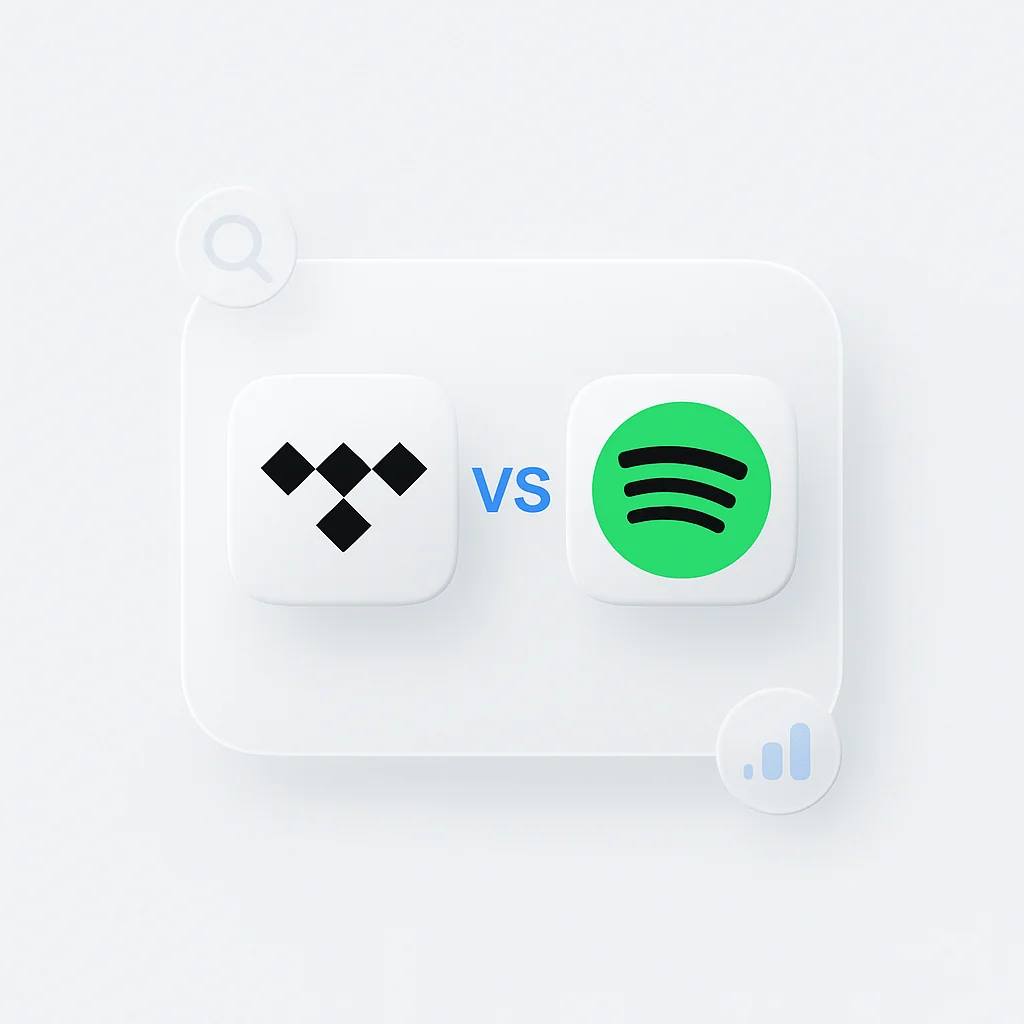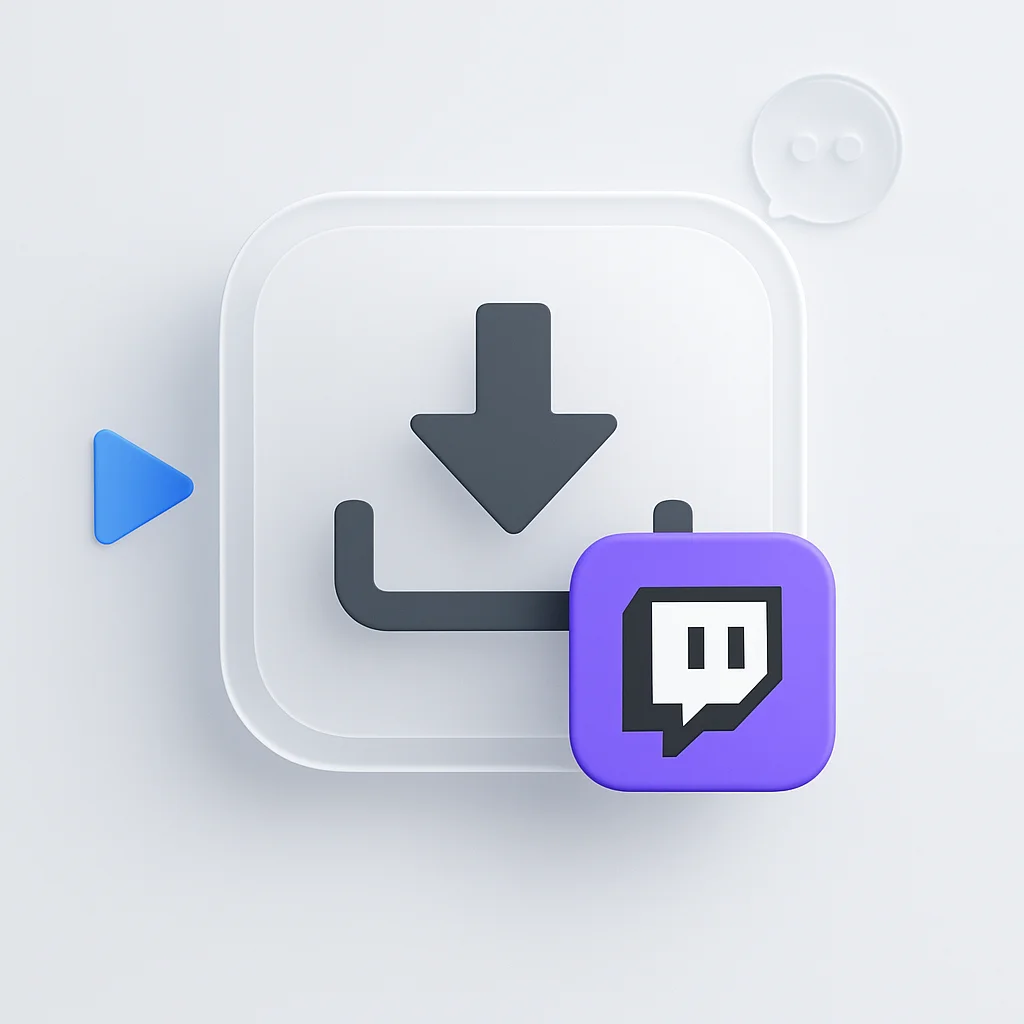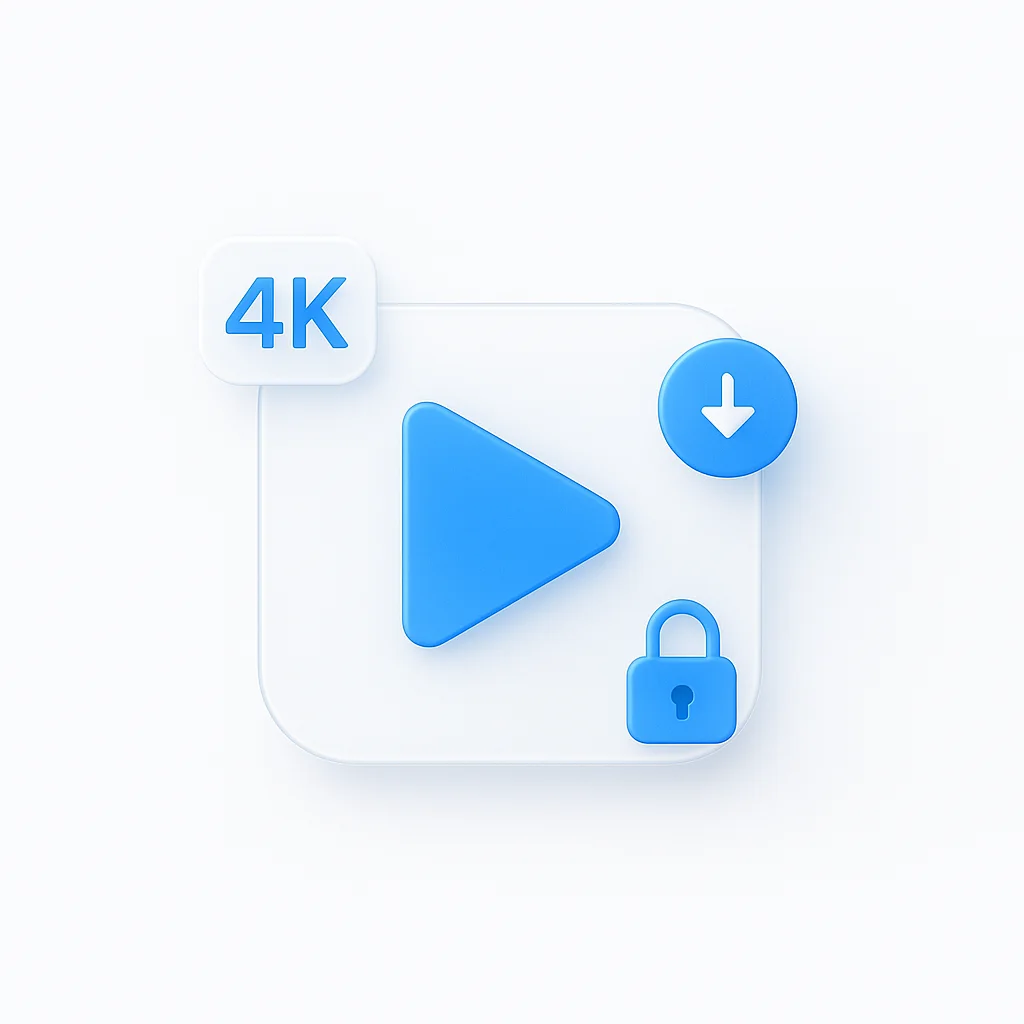Spotify dominates the music streaming landscape with over 600 million users worldwide, but Tidal has carved out a dedicated niche among audiophiles and conscious consumers. This comprehensive comparison examines sound quality, artist payouts, music discovery, and overall value to help you make an informed choice.
The Verdict at a Glance.
Feature
🎵 Tidal
🎧 Spotify
1: Sound Quality: The Audiophile’s Battleground
Sound quality is the most significant differentiator between these two platforms, and it’s where Tidal has traditionally held the advantage.
🎵 Tidal's HiFi and HiFi Plus
Tidal offers two premium tiers:
- • HiFi: Lossless CD Quality (16-bit/44.1 kHz FLAC)
- • HiFi Plus: Hi-Res Audio up to 24-bit/192 kHz with MQA
- • Immersive Audio: Dolby Atmos and 360 Reality Audio
🎧 Spotify's "Very High" Quality
Spotify's current offering:
- • Premium: 320 kbps Ogg Vorbis (lossy compression)
- • HiFi Tier: Announced but not yet available as of Oct 2025
- • Note: Good quality but technically lossy compression
Understanding the Technical Difference
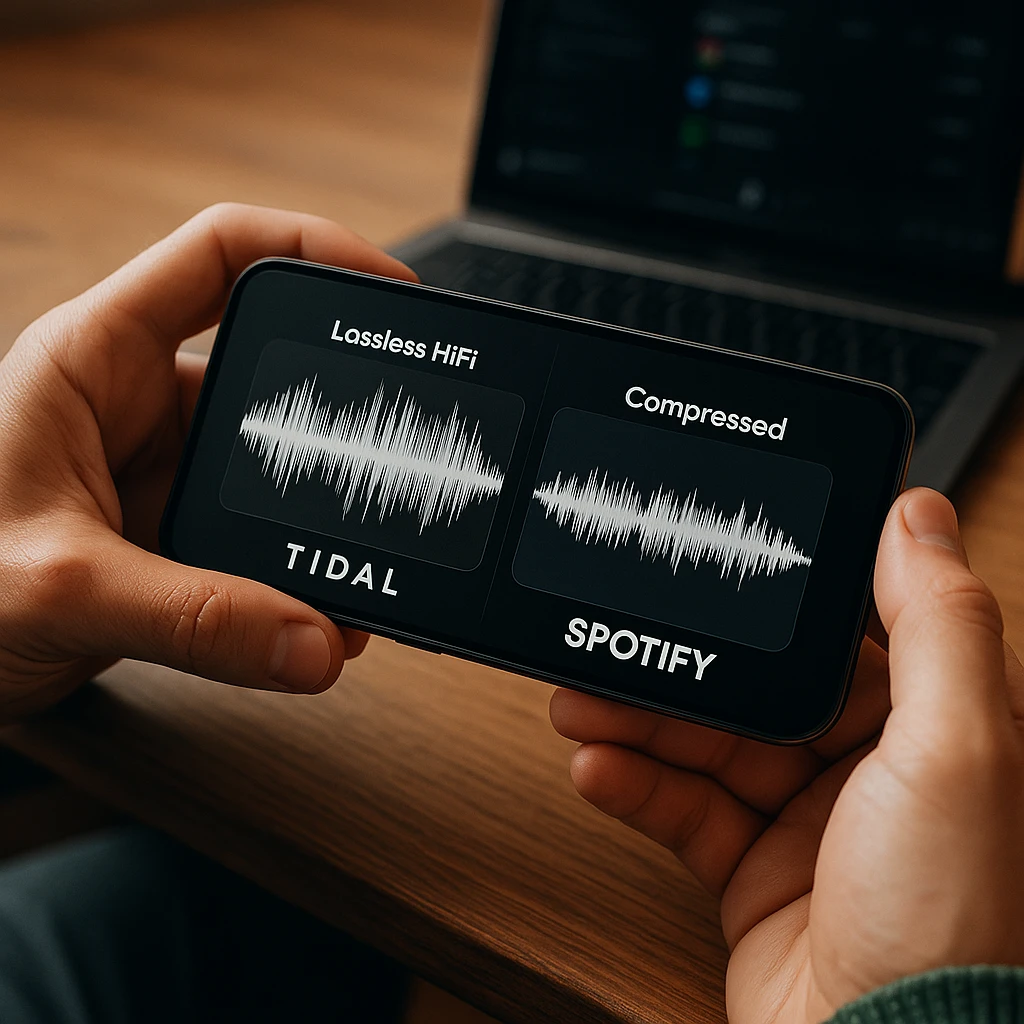
2: Music Discovery and Playlists - The Algorithm King
While Tidal excels in audio quality, Spotify dominates in music discovery and personalization.
Spotify's Algorithmic Power
Spotify's recommendation engine is legendary in the industry, powered by advanced machine learning and collaborative filtering.
Tidal's Human-Curated Approach
Tidal focuses on editorial curation and artist-centric content, with features like:
- • My Mix: Personalized playlists based on listening history
- • Editorial Playlists: Curated by music experts and artists
- • Artist Content: Exclusive videos, interviews, and behind-the-scenes
3: Artist Payouts and Ethics - The Conscious Consumer’s Choice
For many users, how much artists earn per stream is a critical factor in choosing a streaming service.
Understanding the Pro-Rata Model
Both platforms use the “pro-rata” payment system, where all subscription revenue goes into a pool and is divided based on total streams. According to Digital Music News, this means:
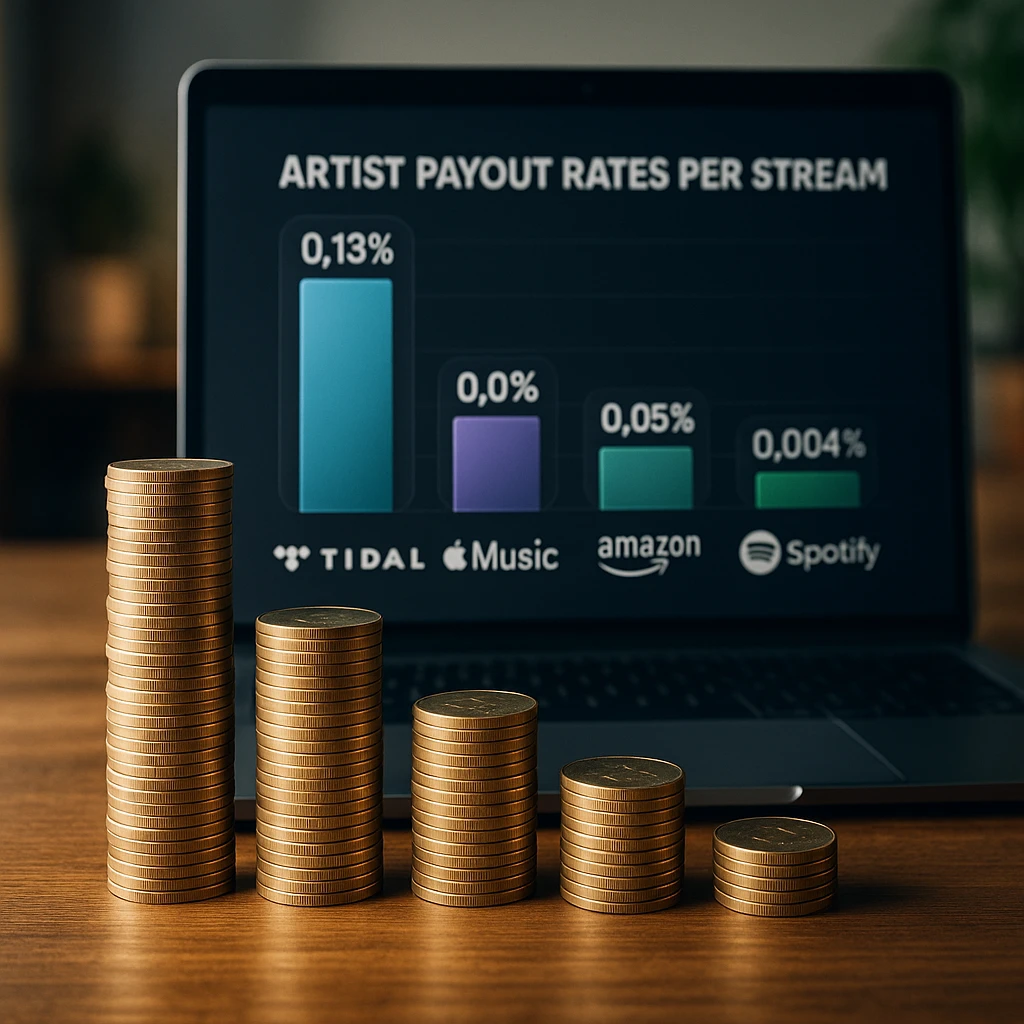
The Community Verdict: What Reddit Says About Tidal vs. Spotify
Real user experiences provide valuable insights beyond marketing claims. Here’s what the streaming community consistently reports:
🎧 The Audiophiles' Consensus
On subreddits like r/audiophile and r/TIdal, users consistently praise Tidal's sound quality:
🔄 The "I Went Back to Spotify" Story
However, many users report returning to Spotify despite Tidal's superior audio:
Additional Features Comparison
| Feature | Tidal | Spotify |
|---|---|---|
| Library Size | 100+ million tracks | 100+ million tracks |
| Podcasts | Limited selection | Extensive library with exclusives |
| Social Features | Basic sharing | Friend activity, Wrapped, Blend playlists |
| Offline Downloads | ✓ Yes | ✓ Yes |
| Cross-Platform | iOS, Android, Desktop, Web | iOS, Android, Desktop, Web, Smart devices |
| Free Tier | ❌ No | ✓ Yes (ad-supported) |
Pricing Breakdown (October 2025)
Tidal Pricing
Spotify Pricing
Frequently Asked Questions
Tidal is better than Spotify in two key areas: sound quality and artist payout rates. Tidal offers lossless HiFi audio up to 24-bit/192 kHz, while Spotify maxes out at 320 kbps lossy compression. Tidal also pays artists approximately $0.013 per stream compared to Spotify's $0.004. However, Spotify is widely considered better for music discovery, podcasts, and social features. The "better" choice depends on your priorities.
Both services have libraries of over 100 million songs, and their catalogs are nearly identical for major artists. You may find minor differences in obscure indie tracks or regional exclusives, but for most users, the libraries are comparable. The main difference is in how you discover music, not what's available.
Yes, you can easily transfer your playlists using third-party services like TuneMyMusic or Soundiiz. The process usually takes just a few minutes and can transfer thousands of songs. Most services offer free transfers for a limited number of playlists, with premium options for unlimited transfers.
The difference depends on your audio equipment. With standard earbuds or Bluetooth speakers, the difference is minimal. However, with quality headphones (over $100), wired connections, or a good sound system, the difference becomes clear. Tidal's lossless audio preserves more detail, dynamic range, and clarity. Audiophiles consistently report that Tidal sounds "fuller" and "more alive" compared to Spotify's compressed audio.
Spotify's popularity stems from several factors: a free tier that attracts users, superior music discovery algorithms, extensive podcast library, social features like Spotify Wrapped, and earlier market entry. Spotify also has better integration with smart devices and third-party apps. While Tidal offers better audio quality, most casual listeners prioritize convenience and discovery over sound quality.
Yes, many users maintain subscriptions to both services. A common strategy is using Spotify for discovery and podcasts while using Tidal for critical listening sessions with favorite albums. If you're recording or analyzing music content, tools like ScreenApp's audio analyzer can help you compare audio quality across platforms.
The Final Verdict: Who Should Choose What in 2025?
Make Your Choice
Choose the platform that matches your priorities
Choose Tidal If...
Choose Spotify If...
Beyond Streaming: Enhance Your Music Experience
Whether you choose Tidal or Spotify, you can enhance your music experience with complementary tools. For content creators and musicians, ScreenApp’s audio analyzer helps you analyze audio quality and compare tracks. If you’re creating music content, our audio translation features can help you reach global audiences.
For those interested in creating content about music, check out our guides on screen recording software for capturing your listening sessions or video editing tools for creating music-related content.
Conclusion: Both Platforms Excel in Different Ways
The Tidal vs Spotify debate doesn’t have a universal winner it depends entirely on your priorities. Tidal delivers superior sound quality and better artist compensation, making it ideal for audiophiles and conscious consumers. Spotify excels at music discovery, social features, and overall convenience, making it the better choice for most casual listeners.
According to Statista’s 2025 music streaming report, while Spotify maintains market dominance with 31% of global subscribers, Tidal’s user base has grown 15% year-over-year among audiophile communities, suggesting both platforms have found their ideal audiences.
The Bottom Line: If you have quality audio equipment and care about sound fidelity, try Tidal’s free trial. If you prioritize discovering new music and social features, Spotify remains unmatched. Many power users maintain both subscriptions, using each platform for its strengths.
What’s your choice? Share your experience with Tidal vs Spotify in the comments below!
